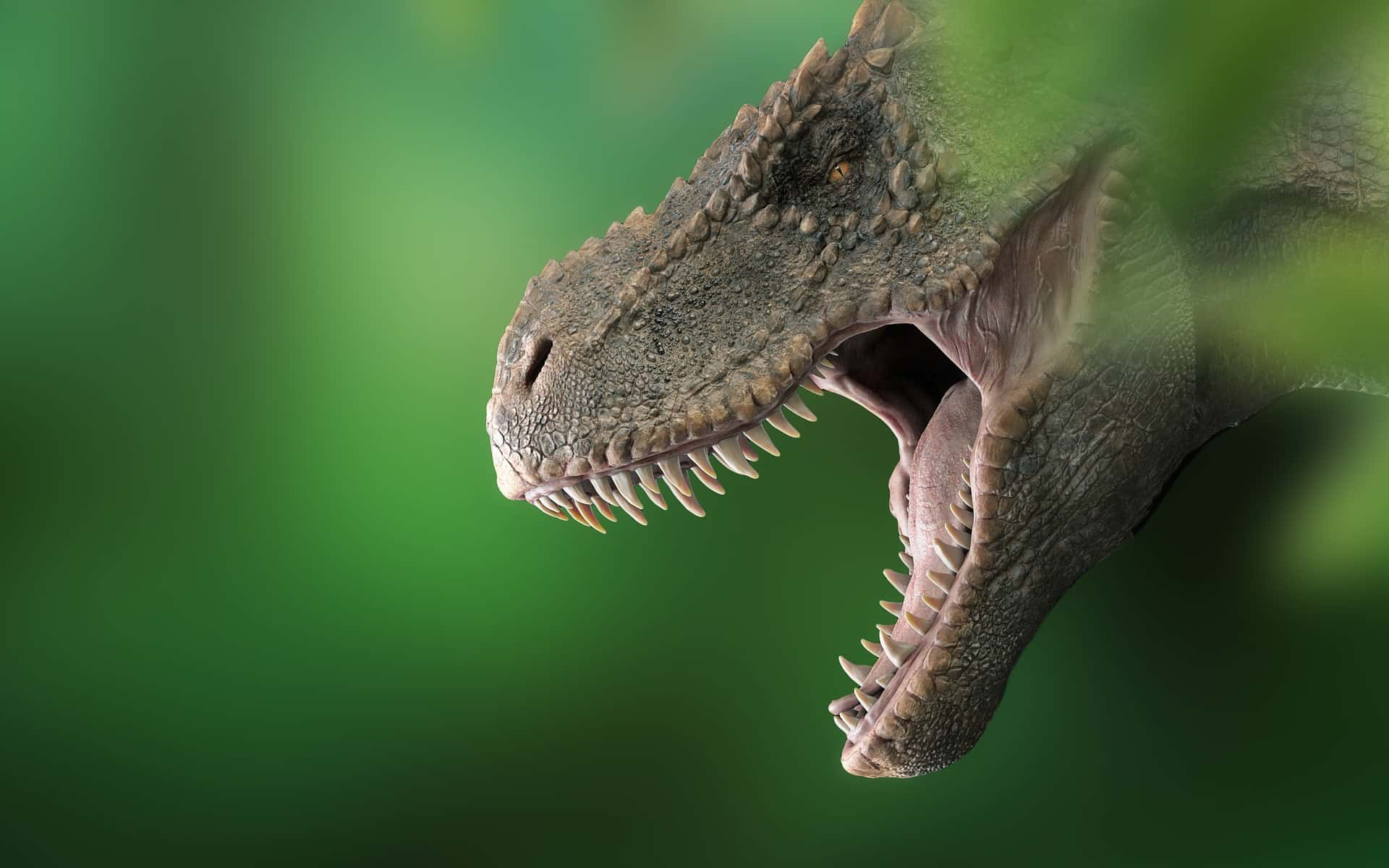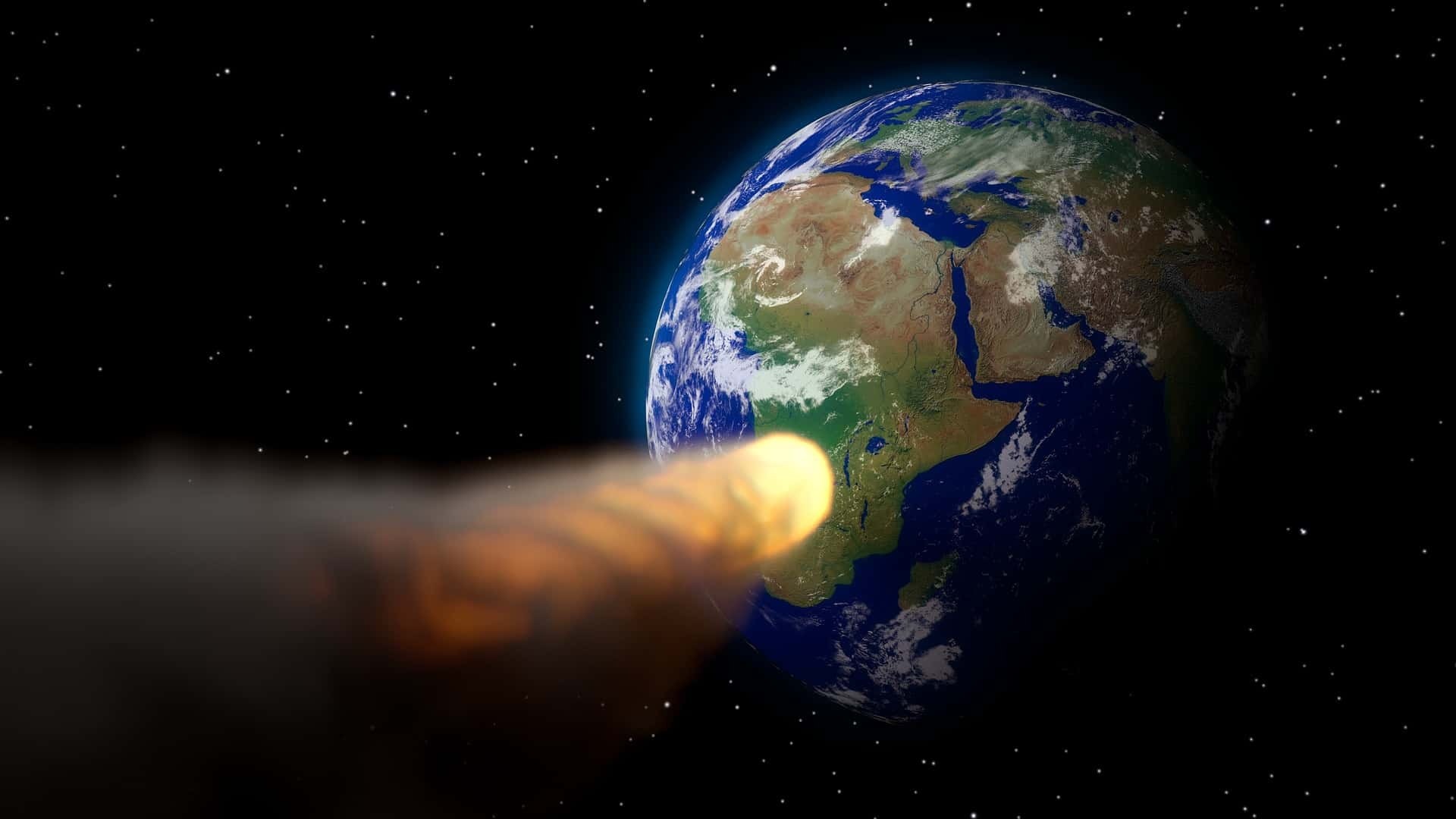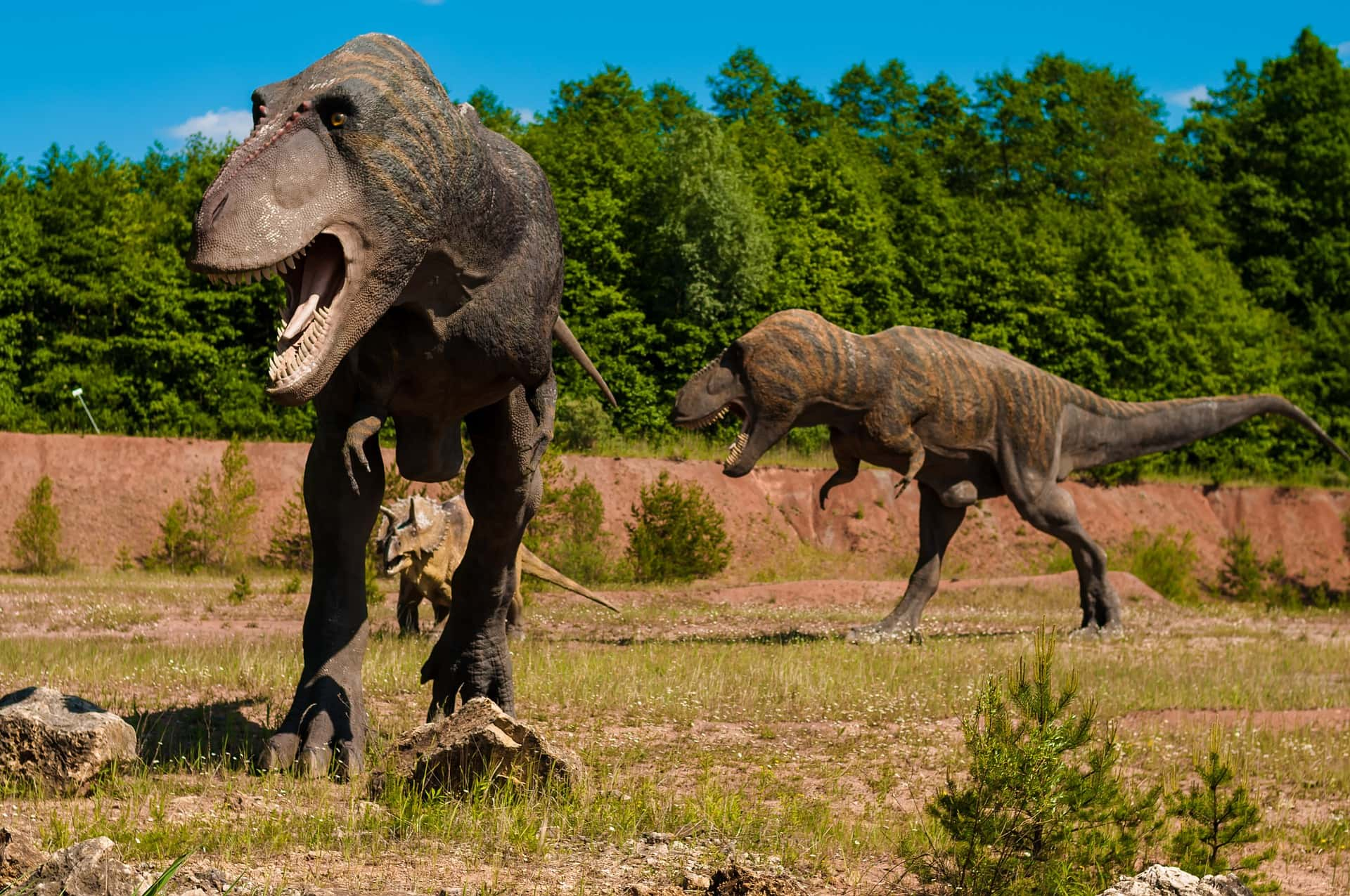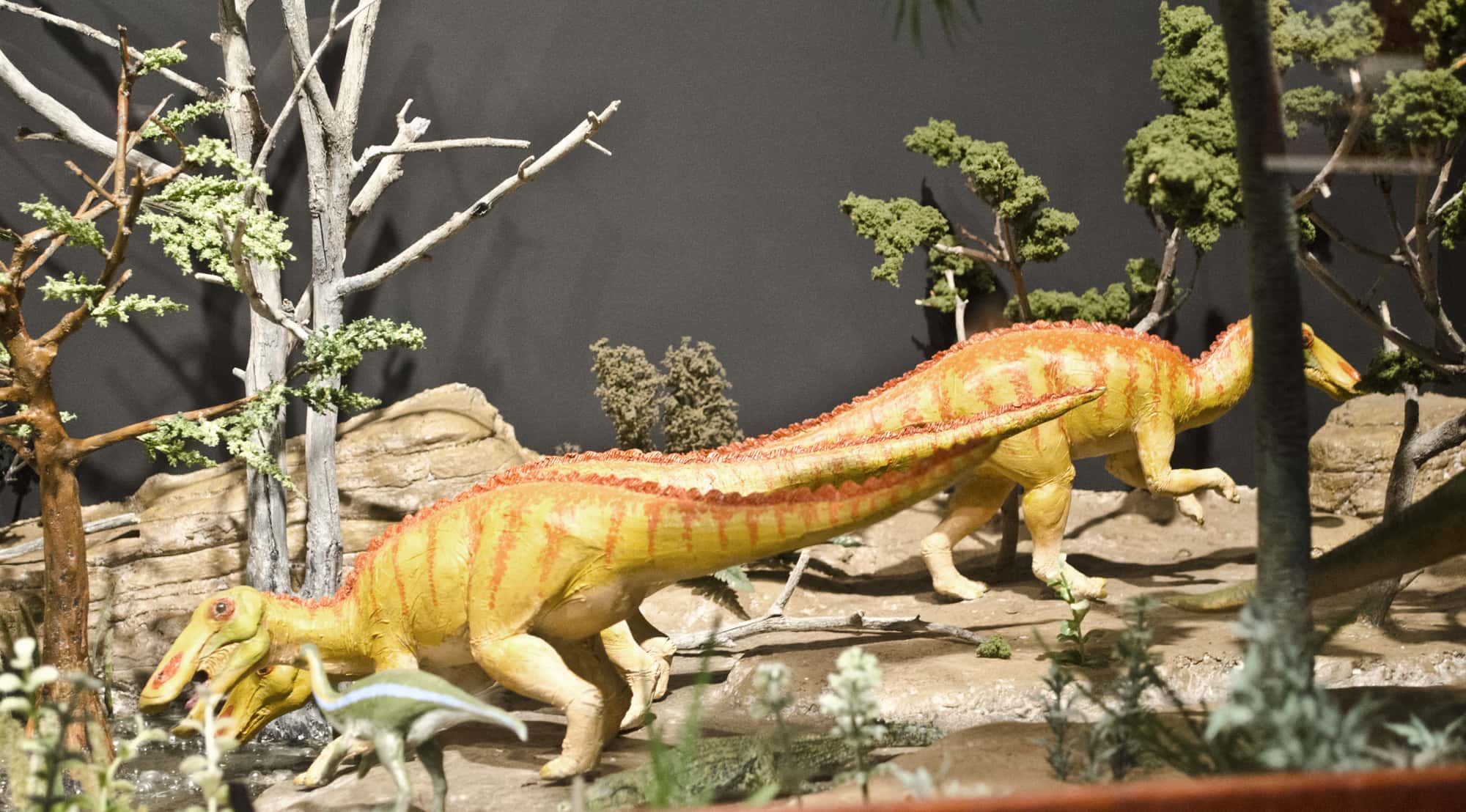Dinosaurs are a diverse group of reptiles of the evolutionary category (clade) Dinosauria that first appeared during the late Triassic period (approximately 250 million years ago). Dinosaurs dominated Earth for nearly 200 million years. Though most dinosaurs went extinct, many of their relatives are still alive to this day.
Dinosaurs are also... just freakin' awesome, man. Show me a little kid who isn't at the very least kind-of fascinated by these scaly (or were they scaly??) monstrosities, and I'll show you a flying pig. There's just something about them that seems to capture the imagination. And whether it's through movies, books, artwork, museums, or any number of other human activities, we continually find new ways to express that love for Earth's former inhabitants.
That being said, there are a whole host of fascinating dinosaur facts that few (if any) of us actually know. And beyond that, there are tons of things we believe to be true that are outright incorrect.
So if you're ready to become the most qualified dinosaur-detective amongst your friends and family... look no further. Here are 42 facts about dinosaurs which you won't soon forget.
1. Divided
All dinosaurs fall into one of two subdivisions: Ornithischia (bird-hipped dinosaurs), and Saurischia (lizard-hipped dinosaurs).
Present-day birds evolved from Saurischia, which explains their common features, such as hollow bones.

2. Birdy
It is widely agreed upon by the scientific community that many dinosaurs almost certainly evolved into birds. Dinosaurs evolving into birds actually happened a few times throughout history, and it wasn’t always successful. A prime example of this is the feathered Microraptor that has no living descendants. Well-preserved fossils have shown clear evidence of feathers appearing on a number of raptor species.
Microraptor fossil
3. Luke Warm Blooded
While most dinosaurs were cold-blooded, much like their modern-day lizard cousins, new evidence suggests that some dinosaurs were, in fact, closer to warm-blooded like mammals. This means their environment did not regulate their temperature like a cold-blooded animal but they also were not able to sustain the continuous growth of a warm-blooded animal. This was only the case with a small number of dinosaurs, most of which were predatory in nature.
4. Outnumbered
While predators like the T-Rex and Spinosaurus are the first images that are conjured up when we think of dinosaurs, they were actually the minority. Plant-eating dinosaurs heavily outnumbered the meat eaters, but prey dinosaurs don’t look as cool as predators. This is still the trend today, with meat-eating animals being heavily outnumbered by their plant-eating counterparts.
5. Dumb Dumbs
Dinosaurs are not known for their intelligence. Some plant eaters, like the Stegosaurus, had brains so small when compared to their respective body-size, they might as well have been walking plants. Predatory dinosaurs, on the other hand, required sharp eye-sight, a powerful sense of smell, and Olympian agility to catch their prey. All these things require significantly more brain power than hunting plants, which might be healthy and all, but is objectively very easy.
Despite this, even the smartest dinosaur was about as smart as the modern day Ostrich, which isn’t very smart at all.
6. Same Time
Mammals and dinosaurs existed at the same time, though nearing the end of the dinosaurs’ reign. Most mammals at the time were tiny burrowing animals. Their small bodies and burrowing behavior allowed mammals to endure and thrive after the ice age that followed the calamitous event which eradicated all the dinosaurs.
7. Timeline
Dinosaurs ruled the Earth for a long time. Like, a LONG time. So long in fact that the time between the Stegosaurus’ existence and the T-Rex’s existence is longer than the time separating modern humans from the T-Rex.
8. Relatives
While it may be hard to believe, the modern day chicken is the closest living relative to the mighty Tyrannosaurus rex.
This little bit of shocking scientific knowledge was discovered by scientists who analyzed a 68-million-year-old fragment of fossilized T-Rex protein. They used this data to place the extinct dinosaur on a generally agreed-upon model of the evolutionary tree... and to determine that it's closest living kin is the mighty chicken (along with ostriches).
So the next time you look at a chicken confusedly stumbling around a barnyard, remember that they're the descendants of literal lizard monsters. Oh, how the mighty have fallen.
Evolution, you're crazy.
I see your point.
9. Up In Arms
Though internet memes would have you believe that the T-Rex had the smallest arms (and should, therefore, be the subject of intense ridicule) there is another carnivore that had even smaller arms, proportionally speaking...
The Carnotaurus is known for having the smallest arms of any dinosaur: about 1/4 the size of their heads. They looked a bit like scaly pigeons.

History's most fascinating stories and darkest secrets, delivered to your inbox daily.
10. Underrated
When it comes to predatory dinosaurs, the T-Rex is thought to tower over the competition. That was until the Spinosaurus was discovered in the 20th century. The Spinosaurus could grow over 50 feet long and weighed a whopping 20 tonnes, three times the weight of an average T-Rex.
11. Massive
The largest ever land dinosaur is the Argentinosaurus, which weighed up to 100 tonnes and grew to be over 115 feet long. The massive herbivore’s body weight was equal to a little more than a dozen, full grown elephants.
12. Gas Giants
It’s speculated that Sauropods (long-necked dinos like the Argentinosaurus) had stomachs that acted like fermentation chambers, as gas-producing bacteria was needed to help digest their fibrous diets. This implied that Sauropods would frequently release gas. Jurassic Park would have been a smelly place indeed.
13. The Little Guys
While we tend to think of dinosaurs as giant beasts, most of them were actually rather small. The thing is, small frail bones tend not to withstand the elements over time, while giant bones have a better chance of surviving long enough to be found. That’s why some of the most intact dinosaur skeletons discovered are only of the largest dinosaurs.
14. Blasteroid
The asteroid, thought to have initiated the mass wipe-out event (ice age) that resulted in the disappearance of dinosaurs, is presumed to have struck Mexico's Yucatan Peninsula. It's actually believed to have created the Gulf of Mexico. The massive rock was 6 miles in diameter and sent shockwaves around the world.
15. Empty Inside
Like modern day birds, many dinosaurs, including even some of the toughest (like the Velociraptor) had hollow bones. Having hollow bones is what eventually lead to birds taking flight as they were lighter, and required less effort to get airborne.
16. To the End
One of the most spectacular fossils ever discovered is the aptly named “Fighting Dinosaurs,” where a fossilized Velociraptor is facing off against a Protoceratops. The two were likely engaged in mortal combat when a sand dune collapsed over the two, forever freezing them in time.
17. Dino Debut
The first ever dinosaur fossils ever discovered were that of the Megalosaurus, which was discovered in the 1820s. This lead to a dinosaur “gold-rush,” referred to as the “bone wars,” as everyone wanted to be the one to discover the next ancient beast slumbering beneath their feet.
18. Dino Debut Part II
Though dinosaurs were being discovered from the 1820’s onward, it wasn’t until 1842 that the term dinosaur was coined. English paleontologist Sir Richard Owens gave dinosaurs their famous name, which means “terrible reptile".
19. Stool Samples
Aside from fossilized dental records, most of what we know about dinosaur diets comes from coprolites, which are fossilized waste materials.
20. Landlocked
The term dinosaur only refers to land dwelling creatures. So while the flying Pterodactyls and the aquatic Plesiosaurs are often referred to as dinosaurs, they technically are not dinosaurs. Pterodactyls belonged to the Pterosaur family, while the Plesiosaur belonged to the Mosasaur family.
21. Girl Power
English paleontologist Mary Anning was instrumental in pioneering work related to Jurassic marine life. In fact, the first ever discoveries of Ichthyosaur and Plesiosaur fossils were her discoveries. Sadly, most of her work was either overshadowed or outright stolen by her male counterparts.
22. Timeless
Based on bone evidence, scientists estimate that some dinosaurs lived to be anywhere from 75 to 300 years old. That’s a lot of candles on the birthday cake.
23. Timeline Part II
Dinosaurs lived in the Mesozoic Era, which included the Triassic, Jurassic, and Cretaceous periods. The Mesozoic Era began 225 million years ago, and ended 66 million years ago.
24. Air Conditioning
Though originally thought to be a form of protective armor, scientists now believe the plates protruding from the back of the Stegosaurus were used to cool it’s massive body. This theory became widely accepted after new evidence was presented showing the plates were actually filled with veins to allow blood to travel through them.
25. Brainiacs
Othniel Charles Marsh, another English paleontologist theorized that dinosaurs had a second brain that was located closer to their posterior. Scientists now know that this wasn’t the case, and dinosaurs had one brain, located in their skulls.
26. Ankle Breaker
The Ankylosaurus’ clubbed tail was so fortified with bone and armor like hide that it could smash through a T-Rex’s ankles. Oddly enough, this is not why it’s called an Ankylosaurus, as they didn’t just smash ankles.
27. Brontosaurus
Though often referenced in The Flintstones, there is no actual dinosaur called the Brontosaurus. The name Brontosaurus is a misidentification that was a byproduct of the “bone wars". The correct name is Apatosaurus. Apatosaurus steak doesn’t have the same ring to it though.
28. Fearless
Not all mammals fled at the sight of dinosaurs. Repenomamus, a small badger-sized mammal that existed over 125 million years ago, left behind fossils that had the remains of baby dinosaurs in their stomachs. Though not initially impressive, one must remember that to eat a baby dinosaur, you need to fight off the mama dinosaur, which was no small feat.
29. Tail As Old As Time
Because some massive dinosaurs had such massive bodies, they needed a way to stay balanced while running, and that’s where the tail comes in. That’s why the most massive dinosaurs like the Argentinosaurus and the Spinosaurus had such large tails.
30. Omelette
It’s no surprise that dinosaur eggs were big, because dinosaurs themselves were big. But it may surprise you to know just how big, as some dinosaur eggs could be as big as beachballs. Just don’t try to dribble them, should you ever find yourself travelling through time.
31. Dental Plan
The Hadrosaurus, one of the many Hadrosaurid (or duck-billed dinosaurs) had over 1,000 teeth at any given time, and could grow new ones indefinitely. You on the other hand cannot, so make sure you floss every night!
32. Pedicures
Meat eating dinosaurs are known as theropods, which means “beast-footed". They are referred to as such because they often had sharp, hooked claws on their toes. In contrast, plant eating dinosaurs had blunt hooves, or even sometimes toenails.
33. Expansive
Dinosaur fossils have been found on every single continent, including Antarctica. This means that some dinosaurs inhabited the frozen continent, which would mean they had to be warm blooded, or the continent was in a different location at the time.
34. Discovered
Colorado is known as the Stegosaurus state because the first ever Stegosaurus skeleton was found near Morrison, Colorado. How much cooler would Colorado have been if the first ever T-Rex skeleton was found there?
35. Buffet
Some of the larger plant eating dinosaurs (like the Argentinosaurus) had to eat as much as a tonne of vegetation per day. That’s roughly a bus-sized pile of leaves.
36. Small beginnings
The first dinosaurs that started to appear during the Triassic period were rather small. Larger dinosaurs like the Brachiosaurus and Triceratops didn’t show up until the Jurassic and Cretaceous periods. No one becomes a giant overnight.
37. Nest Egg
Roy Chapman Andrews, an American explorer found the first dinosaur nest known to science in 1923 while exploring the Gobi desert in Mongolia. Before that, scientists were unsure how dinosaur babies were born.
38. Big Headed
The Triceratops had the largest shielded skull of any known dinosaur. With a thick bony shield that covered its neck, a Triceratops skull could grow to be as long as 6 and ½ feet long. They didn’t let it go to their heads, though.
39. Mistaken
The first possible discovery of dinosaur fossils dates back 3,500 years ago, to China.
Since no one knew what a dinosaur was at the time, their discovery (dinosaur teeth) were thought to belong to dragons that had long since perished.
Which is fascinating! It's entirely possible that our contemporary vision of what a fantasy dragon would look like, is heavily inspired by actual, real-life dinosaurs.
Now that is a good conversation starter. Just ask the next person you see why dragons look like giant lizards. If they look at you like you're crazy, hit them with your brand-new knowledge.
40. Brainiac Part II
A newborn human baby has a larger brain than most adult dinosaurs would have had.
Wrap your head around that one for a minute. Makes Godzilla a little less scary, right? Sure, it wouldn't be much fun if a hundred-foot-high lizard beast were to attack New York... but we could probably beat it by just flashing some really bright lights. Or just trick it into trapping itself.
You would almost feel bad; it's like fighting a giant chicken.
41. Big Shots
Sauropods (like the Argentinosaurus) were the tallest creatures to ever walk the Earth. Some grew to be twice as tall as modern-day giraffes.
Despite their massive size, though, they are not the largest creatures to ever live. That honor goes to the Blue Whale.
42. Misrepresented
While often depicted in media as slightly larger than the average human, with a terrifying and lizard-like in appearance, fossil records show that Velociraptors were almost certainly no bigger than a turkey.
In fact, many scientists now also believe that they resembled modern-day birds in more than just size. As more well-preserved skeletons have been uncovered, we can definitively say that each Velociraptor came complete with colorful feathers and sharp talons. They looked less like massive lizard beasts, and more like psychotic chickens.
What we're saying is this: if you've ever come face-to-face with a pack of grumpy turkeys, you've basically been to Jurassic Park.
Sorry to spoil the illusion.




















































